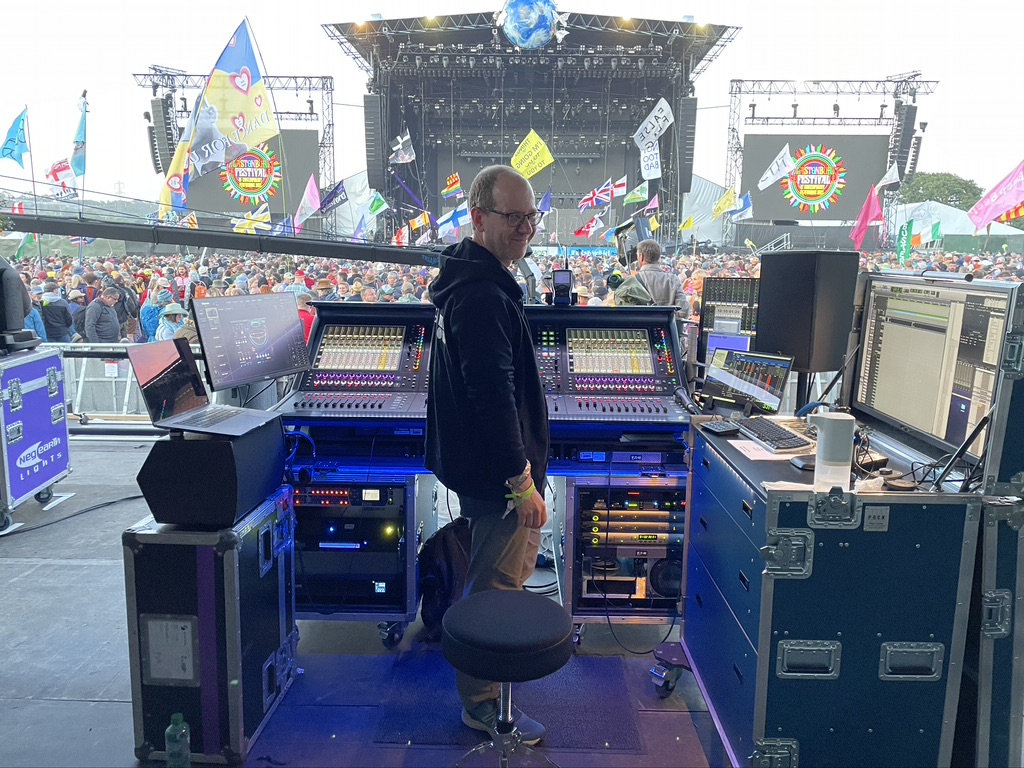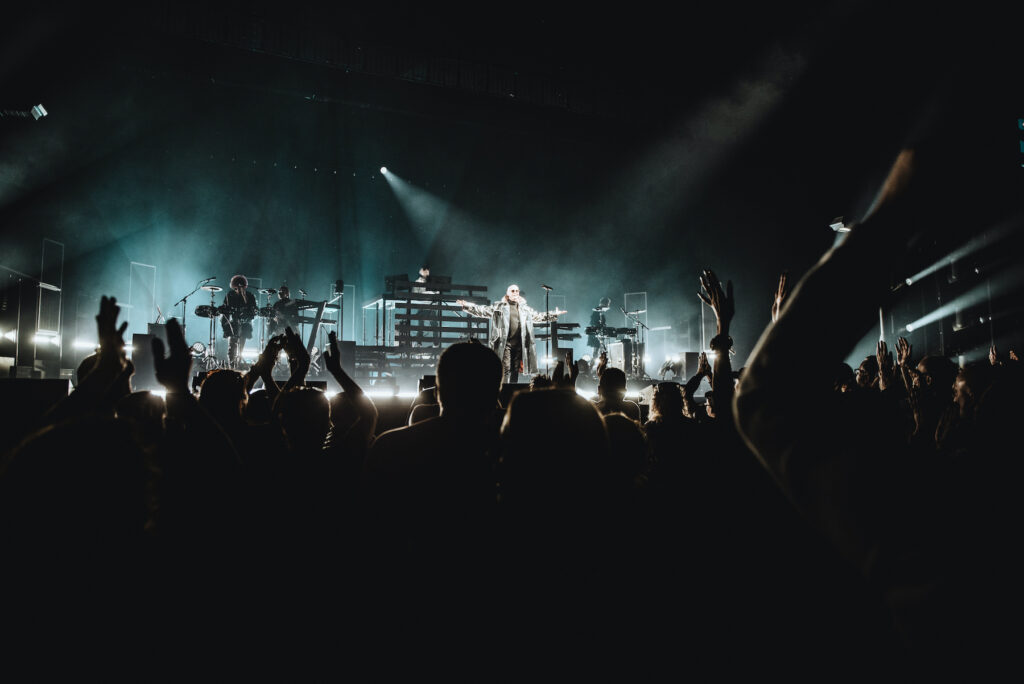For he remembers when Pope Benedict XVI visited Germany in 2006, a large deployment of Optocore devices was used to feed signals to around 100 loudspeaker towers distributed across the location.
By 2010 he was using the German fiber manufacturer’s DD4ME MADI devices during a Pet Shop Boys tour—mainly because at the time DiGiCo SD8 consoles didn’t have built-in Optocore connectivity. “At the same time, the use of MADI connections, converted to Optical MADI over a multicore distance, wasn’t always 100% reliable, and so we had to look at a better solution … and the use of DD4’s ticked all boxes,” he said.

“At this end, it could have been done using the console’s MADI ports, but thinking redundancy, we feel you should never tour with only one of a kind with any mission-critical equipment, and having the second M12 sitting in the ProTools rack in normal conditions reduces the amount of cables that need to get plugged and unplugged during the tour to just one more HMA cable, rather than multiple MADI lines … again improving reliability.”
The M12s are supplied by the band’s long-term vendors (and Optocore partner) Capital Sound, now part of the Solotech Group—who own sufficient M12s to meet production’s requirements.
In addition, their d&b KSL PA system, also provided by Capital Sound, is driven via a second Optocore loop (independent of the DiGiCo/M12 loop). This is built around three X6R interfaces—one at FOH and one each at the stage right and stage left amp racks.
Optocore, says Holger, have supported him at every stage on his journey. “It is a great company, full of skilled and lovely people, and I have always felt well supported, with any ‘real world’ questions that may have been brought to the table.”
And their solutions have proven to be rock solid—”just so long as all fibre connections are properly seated,” he says. “Since the more fragile and dust-sensitive ST or SC connectors aren’t normally unplugged during a tour, the amount of maintenance required is really minimal.”
Finally, top of his Optocore wish list, that he hopes the Munich-based network pioneers will adopt in the future, would be the mixed use of 48 and 96 kHz sample rates within a single system. “Switchable 48/96 SRC per port would be fantastic, as using 96k is more and more becoming common in live sound environments, mainly for the lower monitoring latency, but many computer-based solutions like virtual instrument plug-ins are still far from being stable in 96k. Being able to connect those 48k sources to a 96k system would make the audio world even better!”
Holger Schwark had originally set out as a musician at young age, before gradually moving into sound engineering, undertaking a broad range of Tonmeister duties over the years, covering many different musical genres, before making Pet Shop Boys his own 18 years ago—two years before the Pope’s visit.
With so many tours of duty with Neil Tennant and Chris Lowe now under his belt, how did he constantly manage to keep the sound so fresh. And how did he approach the latest Greatest Hits tour?
The answer is that he merges tried and trusted effects with new platforms. “Like anyone long in the business, I keep the tricks—the processing and effects that have proven to be effective—but we do update the tools and technical platforms slightly.” And this included a move up to Optocore’s powerful M12 MADI switch along the way.
He explains, “We have used a mostly digital signal flow on stage for a long time, but now we use MADI as a signal transport even more than before, as with the M12’s it is totally fine to have multiple MADI sources, some carrying many and some only a few channels of audio,” he explains. This gives him so much more flexibility.
The set-up is an interesting one to put it mildly, with seven computers in use on stage for generating the live audio signals. “Keyboardist Chris Lowe and three additional band members each use a Mac, with virtual electronic instruments and sample engines, plus a playback computer for additional tracks, and then some redundant backup machines. They are all equipped with RME MADI interfaces.
“One M12 is used at stage left to collect all these MADI signals and compose a 104ch MADI stream that is seen by our DiGiCo Quantum 338 consoles as a DD2/DD4 signal, with one 64ch and one 40ch unit. Another M12 is used at FOH to interface with an Avid ProTools HDX system and a DiGiCo UB MADI interface, using a total of 128ch across three MADI ports.

